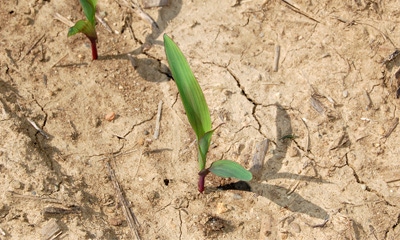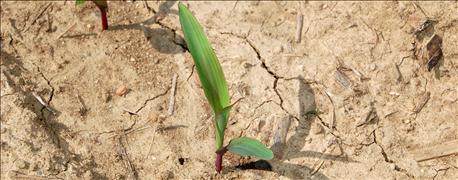June 15, 2016

Many of you have experienced quite a planting season! In a few areas we got off to an early start, only to be shut down for weeks with rain. Others didn’t start planting until the end of May. This wide window of planting will make for some extra time and planning when it comes to scouting this summer. As we start the summer scouting season, I want to discuss five things we’ve seen in fields.
1. Early burndowns and residual on soybeans could be running out.

CHECK BELOWGROUND: This is a time to see what may be going on beneath your fields. Take a shovel or trowel and see what is going on around plants belowground.
Many people sprayed an early burndown with a residual for soybeans. These fields didn’t get planted for a few weeks after application. We’re seeing some weed escapes. The residuals are designed to hold weeds until soybeans close the canopy. The residuals worked — we just did not have soybeans there to shade the weeds. Be diligent in scouting; many of these fields will need to be sprayed before weeds reach a 4-inch height. You will also want to plan on a second post application if we start seeing some escapes of weeds later in the season. Be sure to follow labels for rates and adjuvants. We want to get the best possible weed control we can to maximize yield.
2. Dig corn roots now.
Early-season scouting will involve a shovel. Many issues we have this time of year will be belowground. Take time to dig your plants; look at planting depth and roots, and for any soil compaction issues.
Many cornfields sat cool and damp for a long time. This allowed seedling diseases to enter the plant and cause damage. If you see random plants that have started out great and now seem to be dying, dig those plants and look at the mesocotyl. Is it white or turning brown? The corn plant uses the seed for its main energy source until nodal roots are developed. At V4 to V5, the corn plant will live off the roots and not need the seed. So, if your plants are still small and the mesocotyl is turning brown, survival will be difficult.
3. Watch for insect feeding and other types of damage.
When you’re looking at the roots, also look for insect feeding. We have seen a few cases of wireworm damaging the seed or growing point. This may look like seedling blight from aboveground. Aboveground, cutworm and armyworm have done some feeding and damage.
4. Soil compaction could be an issue.
Many fields were dry on top but wet underneath during corn planting. I’ve seen fields that look stunted and yellow. Again, dig the plants and look at the roots; sidewall compaction could be a concern this year. Some fields have also had nodal roots develop in dry dirt as the corn transitions to living off the nodal roots. We can see some yellowing and stunting if there is not adequate moisture to deliver nutrients to the plant.
5. Rapid growth syndrome was noticed in some fields.
I have also seen rapid growth syndrome in a few fields and hybrids. This happens when we have cool, cloudy weather with a quick warmup. The corn grows quickly and doesn’t unwrap the whorl fast enough. When it does finally unwrap, the leaves look bright yellow to white. This is not a concern when it comes to yield loss — it's mainly just cosmetic. Plants will generally recover nicely.
Gauck is a field agronomist for Beck’s and an Indiana Certified Crop Adviser. He writes from Decatur County.
You May Also Like




